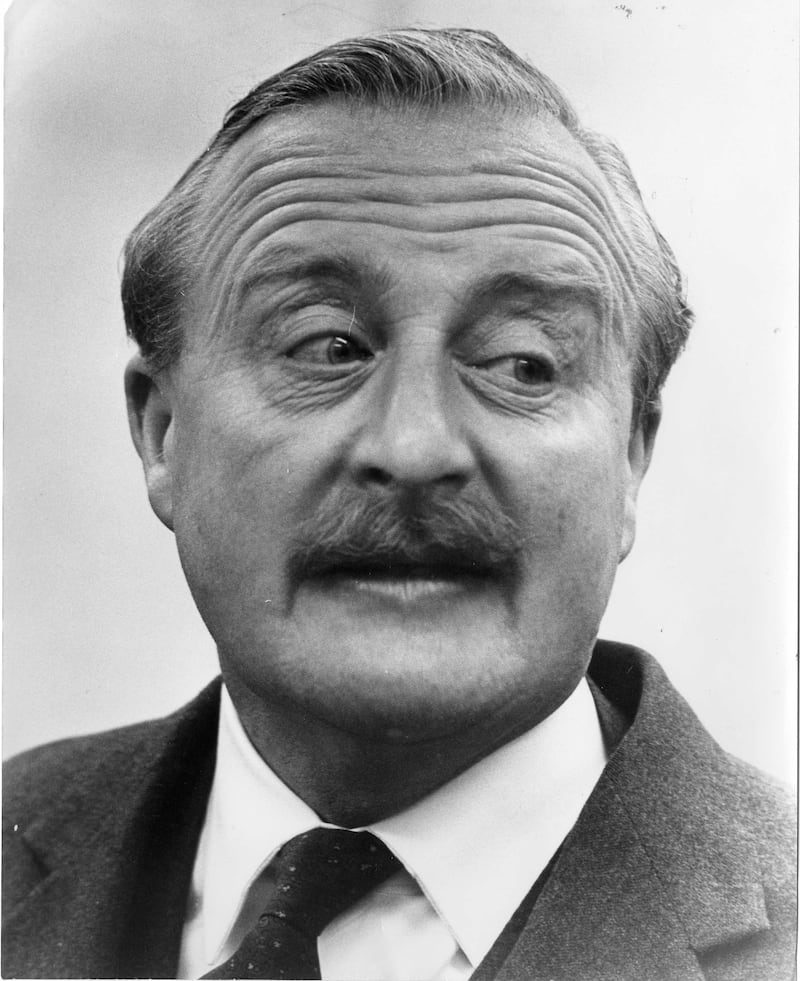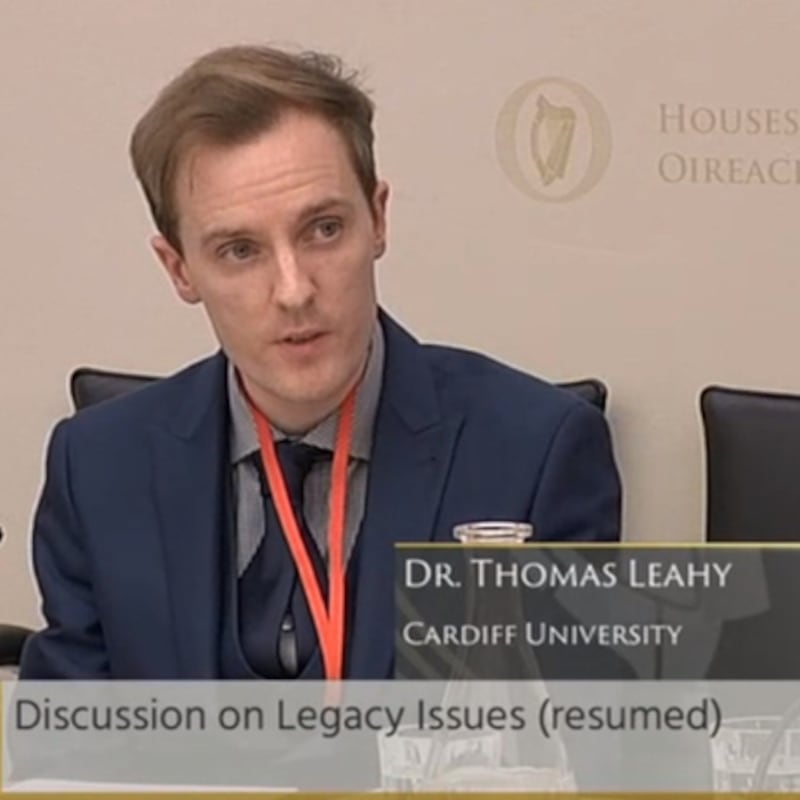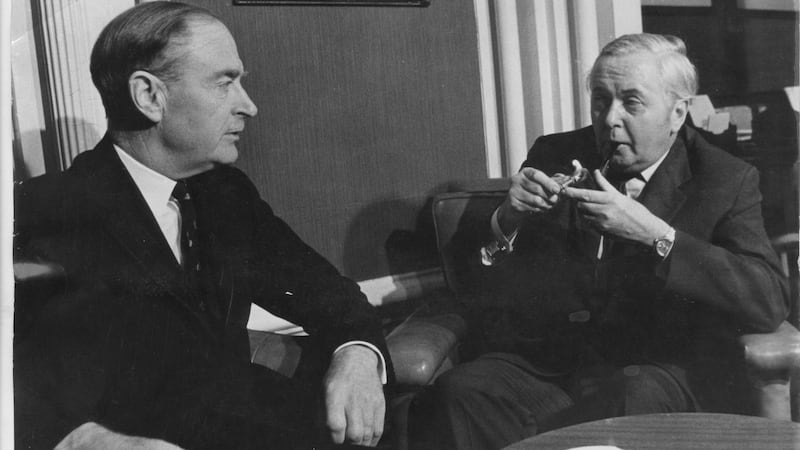Writing his annual review at the end of 1974 for then British foreign secretary James Callaghan, Sir Arthur Galsworthy, the British ambassador to Dublin, found it puzzling how the Irish government and wider Irish society had not been more outraged by the Dublin and Monaghan bombings.
The co-ordinated, no warning bombings in Dublin city centre on May 17th, 1974, claimed the lives of 33 people, including a woman who was nine months pregnant.
“It is interesting, as a commentary on the baffling complexity of the Anglo-Irish relationship, that the single event which contributed most to this revulsion of feeling was not the Dublin and Monaghan car-bombs in May... but the Birmingham pub-bombings in November,” the diplomat wrote.
Historian Thomas Leahy has spent years researching the Irish Government’s response to the conflict and its legacy since 1969, including its handling of the 1974 bombings until Bertie Ahern set up the Barron Inquiry in the early 2000s.
READ MORE

His research reveals new insights into official early communications between Dublin and London around the identity of the perpetrators behind one of the bloodiest days of the Troubles.
Leahy has found a variety of explanations for Dublin’s failures to bring the killers to justice, including agreement among now-retired gardaí, miliary and politicians that Dublin had little insight into loyalist paramilitaries.
the British ‘clearly had at least some information’, he [historian Thomas Leahy] says, about who was behind the three bombs during evening rush hour in Dublin and another in Monaghan 90 minutes later
“That was somewhat unsurprising, since the suspects lived in the North. Apprehending them or monitoring them relied on the Royal Ulster Constabulary and British forces,” Leahy told The Irish Times ahead of today’s 50th anniversary of the bombings.
However, the British “clearly had at least some information”, he says, about who was behind the three bombs during evening rush hour in Dublin and another in Monaghan 90 minutes later – enough to convince Britain’s Northern Ireland secretary Merlyn Rees and prime minister Harold Wilson.
During meetings in autumn and winter of 1974, the two told taoiseach Liam Cosgrave and minister for foreign affairs Garret FitzGerald that they believed those behind at least the Dublin bombings, if not the Monaghan bombings, were interned.
Internment – mass arrest and imprisonment without trial – was introduced in Northern Ireland in 1971 as a British government measure to deal with a worsening security situation in the early years of the Troubles.
The UK message was relayed first in No 10 Downing Street on September 11th, where Rees, speaking in confidence, said the 25 interment orders he had signed during the Ulster Workers’ Council strike in the second half of May 1974 included the people suspected of the Dublin bombing.
“He was unable to state this in public because of the nature of the evidence,” a minute of the meeting states, though it noted, too, that there were no follow-up questions from Irish officials or ministers.
The British, Leahy believes, were content to share their suspicions, “perhaps to see if they could get a positive response in reciprocation from the Irish on cross-Border security” – a major bone of contention for the British.
“Whatever the reason, Irish ministers were made aware that the Dublin bombing suspects at least were known and detained in Northern Ireland,” says Leahy, a historian at the University of Cardiff.

Two months later, on November 21st, the sides met again in the Department of Foreign Affairs in Iveagh House in Dublin. This time, tánaiste and Labour leader Brendan Corish was present. Again, Wilson said they believed the Dublin bombers were interned.
Internment was under review, he said, but it was “a difficult problem made more difficult by the fact that many internees who had been released had subsequently been rearrested committing acts of terrorism”. Ending it would bring problems.
The “border terrorists in Dublin were now in detention,” he said, and this was no doubt welcome to the Irish government, but if detention was ended, it would probably not be possible to [get] a conviction if they were sent for trial,” the British minute records.
Leahy says the reference to “border terrorists” by Wilson is confused in part.
“What did Wilson mean by ‘the border terrorists in Dublin are now in detention’? Was he referring to those who bombed Dublin?” he said.
The Irish minute of the meeting held in the Irish National Archives is clearer, quoting Wilson as emphasising that the Dublin bombers were interned and “that this was the only way in which they could be dealt with because the sort of evidence against them would not stand up in court”.
“They [the British] were certain that they had the right people, but they could not bring them to trial,” the minute continues. This time the Irish had questions, with Corish asking whether the British had interned the right people, “that nobody was wrongly interned”.
When information was given by the British naming the bombers, it was not followed up and ‘any follow-up was limited to complaints by the minister for foreign affairs that those involved had been released from internment’, Barron found.
“Wilson wanted to use the Dublin bombers as an example of the dangers of ending internment,” Leahy says, while Corish was clearly double-checking Wilson’s belief that the British had the Dublin bombers in custody, if not those responsible for the bomb in Monaghan.
However, the British claims were not interrogated, says Leahy, adding that the Barron Inquiry’s judgment – that the Garda investigation into the bombings was not wound up on politicians’ orders, but that the Irish government had shown “little interest”– still holds.

When information was given by the British naming the bombers, it was not followed up and “any follow-up was limited to complaints by the minister for foreign affairs that those involved had been released from internment”, Barron found.
Leahy says the Irish government had a fear of “rocking the boat” and that it and “sections of the Irish people” were cautious about “dwelling” on the bombings, fearing that it “might assist the IRA. And they feared further loyalist attacks.”
Equally, Dublin was reluctant to “raise awkward questions” given the suspicions circulating that British agents had been involved, he says.
Fifty years on, attempts to pressure the British to release files have repeatedly failed. And there is little sign that that is going to change, Leahy fears.

















